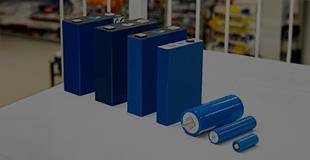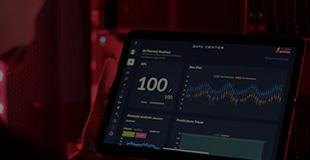Battery Management System for Lithium Batteries
Although lithium cells are very high-performance, the nature of their production cycle cannot ensure that they are completely uniform, meaning that there are small differences between the individual cells of a battery in terms of their capacity, internal resistance, and self-discharge.
This means that if the BMS balancing system is not able to keep the cells balanced, the difference in the charge state of the cells increases each cycle and gradually reduces the overall range of the battery in the vehicle.
To avoid this loss of efficiency, Flash Battery has patented a Battery Management System which is one-of-a-kind, with a proprietary electronic balancing system, the Flash Balancing System, capable of equalising the level of each cell during charge and discharge.
The Flash Balancing System is actively and passively at high power (20 A), delivering record balancing times, full and complete control of battery packs, and stable performance over time.

BMS or Battery Management System: what it is and its meaning
The Battery Management System, known as the BMS, is a lithium battery’s brain. If properly designed, it can perform countless functions, from balancing the battery, to intelligently managing its safety and the range of the industrial machines or electric vehicles on which it is installed.
Its main function is balancing, something which is vital for ensuring that the battery is efficient and has a high capacity throughout its life-cycle. But there is more! A good EMS has to constantly and comprehensively control the battery, keeping its performance stable and constantly monitoring its parameters.
Without an appropriate cell balancing system, the difference between the lithium cells would steadily increase, gradually reducing the available capacity.

BMS for Lithium Batteries: traditional balancing techniques
To avoid loss of efficiency due to differences between the lithium cells, traditional BMSs use passive balancing systems, applying a resistance to the highest cells, with a view to reducing their level to that of the lowest cell.
It is an economic method but it has a number of disadvantages, beginning with the long balancing times (between 8 and 12 hours), which often mean that this charging phase is interrupted due to operational requirements, leading to a gradual reduction in the nominal capacity of the pack. This means that industrial machines and electric vehicles lose range on every cycle.
When using traditional Battery Management Systems, it is also not possible to replace the component on site, instead the battery has to be returned to the manufacturer, incurring high maintenance costs due to prolonged machine downtime and shipping fees.

Flash Balancing System: Flash Battery's exclusive solution for high-power active and passive balancing
The Flash Balancing System is the exclusive Battery Management System by Flash Battery that is unique in the industry: a patented technology which guarantees the highest performance levels for lithium batteries for industrial machines and electric vehicles.
Developed to act on each individual cell, through combined high-power balancing, it acts both actively and passively, with a balancing current at least 20 times higher than other lithium batteries (20A).
How does it do it? In active mode during discharge and in active and passive mode during charging, which means Flash Battery's lithium batteries are balanced in record time (under 30 minutes), with a full charge time of just 2 hours. In addition, the Flash Balancing System, combined with the battery’s internal architecture, eliminates the need for maintenance.
Traditional BMS vs. Flash Balancing System
The Flash Balancing System is not a simple BMS, it is the brain of the Flash Battery lithium batteries. A unique and patented industrial innovation which offers a strategic competitive advantage. In addition to the exclusive balancing system, it is able to perform a number of other functions which provide comprehensive and continuous monitoring of the battery over time.
In particular, constant monitoring of voltage, temperature (with 2 heat sensors on every cell) and the internal resistance of individual cells allows our patented BMS to take strategic decisions to manage charging, discharging, and periods of inactivity in the best possible way.
But there’s more! The Flash Balancing System delivers efficient thermal management, sends and receives all information about its operating state directly to and from the vehicle’s control unit, the engine control, and the on-board display, controls the battery charger, and performs predictive analysis throughout the application’s service life.
Flash Balancing System vs Traditional BMSs
Flash Balancing System
Active and passive balancing
at high-power (20 A)
Short and predictable charging time
(balancing times under 30 minutes in cyclical applications)
Active support for weaker cells
at high-power (20 A), both when charging and discharging
Complete temperature control
with 2 sensors on each cell (50 sensors on an 80 V battery)
Zero maintenance
and any unplanned repairs can be performed on site
Analysis of internal resistance
for advanced analysis of State of Health
Remote monitoring with predictive analysis
to identify critical issues and nip them in the bud
Firmware Over the Air (FOTA) Updates
for implementing new features without taking in-person action on the machine or vehicle
Traditional BMS
Passive-only or active-only balancing
at low-power (<500 mA)
Long charging times
(balancing time between 8 and 12 hours)
No support during discharge
low power means it cannot support weaker cells
Only partial temperature control
fewer than 10 sensors on an 80 V battery
High maintenance costs
due to managing machine downtime and sending batteries for repair
No additional analysis
Remote, non-predictive monitoring
used only after a fault arises
No option for remote updates
requires in-person interventions to apply new functionalities












